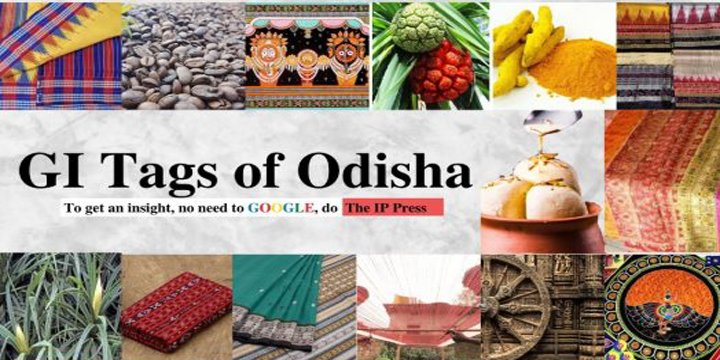Odisha products got GI tags
Context:
- Recently about seven products from Odisha have bagged the fanous Geographical Indication (GI) tag in recognition of their exclusivity to the state.
What are GI tags?
- Geographical Indications of goods generally refer to the place of origin of that particular product.
- Such tags represent as an assurance of quality and distinctiveness, attributable to the fact of its origin in a specific geographical locality or region or country.
- The Department for Promotion of Industry and Internal Trade, Ministry of Commerce and Industry, awards GI tags in India.
- It is to be noted that GI registration is given to an area but not a trader.
- If any unauthorised trader tries to sell the product under that registered name, they can be prosecuted under The Geographical Indications of Goods (Registration and Protection) Act, 1999 for the same.
1. Kapdaganda shawl:
- As per the Odisha State Tribal Museum the shawl is worn by both men and women.
- This beautiful woven shawl is embroidered with red, yellow and green thread and is generally presented during courtship as a sign of formal commitment.
- It is embroidered by the women of the Dongria Kondh tribe which is a particularly vulnerable tribal group (PVTG) in the Niyamgiri hills in Odisha’s Rayagada and Kalahandi districts.
- The shawl also reflects the rich tribal heritage of the Dongria Kondhs.
2. Lanjia Saura Painting:
- The painting is one of the oldest tribal art forms which is also known asIdital.
- The artworks are famous for their aesthetics, beauty, ritualistic association and iconography.
- This belongs to the Lanjia Saura community which is a PVTG largely residing in the Rayagada district.
- These paintings are generally in the form of exterior murals painted on the mud walls of residence.
- Koraput Kala Jeera Rice:
- This rice is also known as the ‘Prince of Rice’ and is famous for its aroma, taste, texture and nutritional value.
- Tribal farmers of the Koraput region have preserved and cultivating the rice variety for around 1,000 years.
- As the rice grains is similar to cumin seeds hence it is also called Kala Jeera.
- Consumption of this special rice variety helps in increasing haemoglobin levels and also improves metabolism in the body.
- Similipal Kai chutney:
- The chutney which is made with red weaver ants is a traditional delicacy of the tribals in Odisha’s Mayurbhanj district.
- The ants are found in the forests of Mayurbhanj and in the Similipal forests which is Asia’s second-largest biosphere.
- The chutney is rich in medicinal and nutritional value and is believed to be a good source of nutrients like protein, calcium, zinc, vitamin B-12, iron, magnesium, potassium, etc.
- The tribals prepare the this chutney by grinding the ants manually on a Sil Batta or the grinding stone.
- Nayagarh Kanteimundi Brinjal:
- This brinjal is known for its prickly thorns on the stems and the whole plant.
- The green and round fruits contain more seeds as compared to other genotypes.
- It is also famous for its unique taste and relatively short cooking time period.
- The plants are resistant to mostly insects and can be grown with minimal pesticide.
- Odisha Khajuri Guda:
- Odisha’s Khajuri Guda or jaggery is a natural sweetener extracted from date palm trees.
- The jaggery is prepared in a trapezoidal form called ‘Patali Gur’ and is mostly organic by nature.
- It is dark brown in colour and has a unique taste.
- Dhenkanal Magji:
- It is a type of sweet made from cheese from buffalo milk, with distinct characteristics in terms of appearance, taste, flavour, shape, and size.
- It has some unique nutritional values that distinguish it from other cheese-based sweets.
- Mandar-Sadangi area of Gondia block is believed to be the centre of origin of the sweet, which has now been spread to the entire district.
- The sweet is prepared by draining moisture from the cheese and then frying it, finally forming balls from the mixture.




